Road trip: The Company Town and the Corn Fields
...My heart's in Accra 2024-08-29
“The rest rooms are upstairs. Turn left at the Chihuly.”
While those aren’t the directions I usually expect to hear in the Visitors Center of a small city, Columbus, Indiana is anything but an ordinary town.
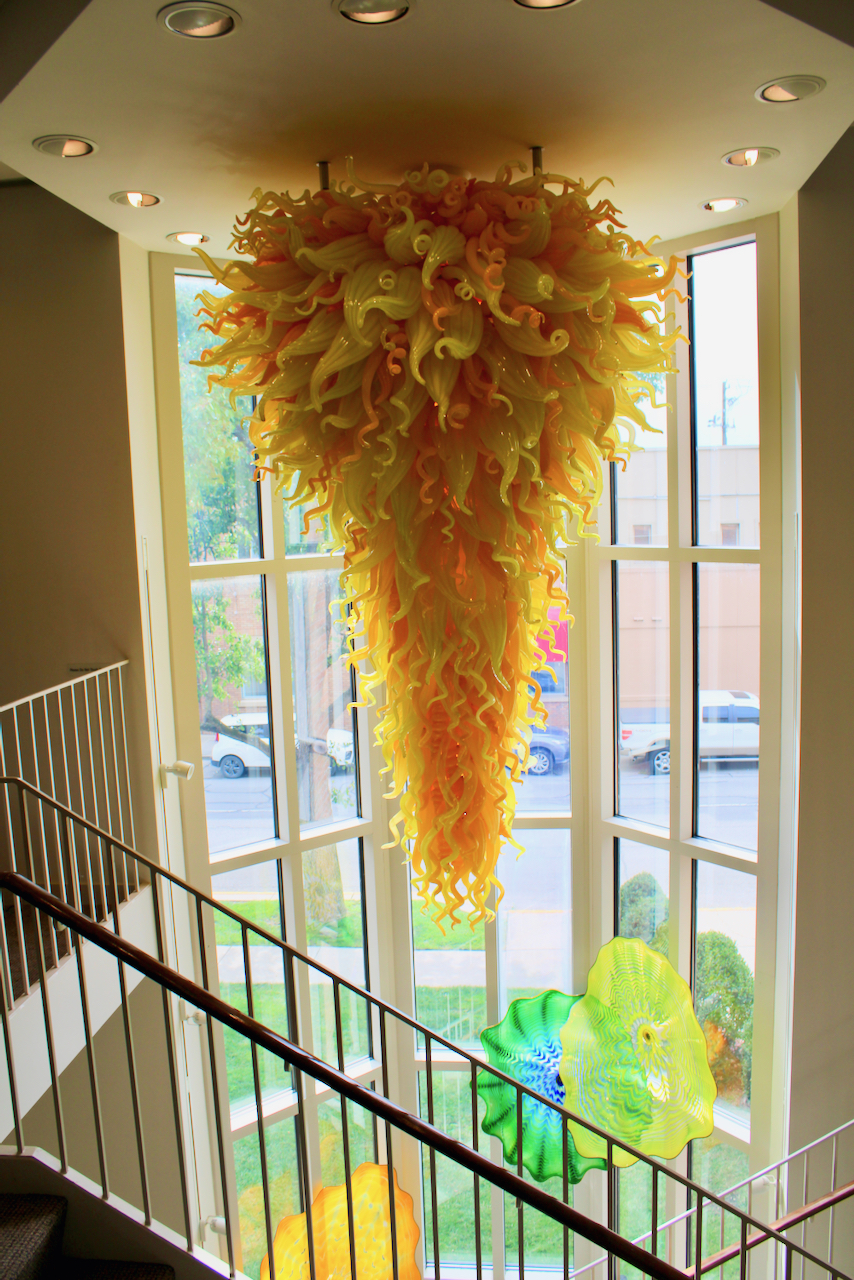
Dale Chihuly chandelier, Columbus Indiana visitors center
There are two primary reasons to come to Columbus, and to some extent, they are the same reason. Cummins is headquartered here, the makers of diesel engines and generators that power trucks, buses, boats and buildings around the world. And Columbus has more architecturally significant buildings in the span of a few blocks than most major US cities do within their entire footprint.
J. Irwin Miller is the explanation both for why Cummins is in Columbus and why I detoured in my drive across Indiana to visit. The child of a college professor, Miller was born in Columbus in 1909, educated at Yale and Oxford, and joined Cummins, a family business in Columbus, in 1933 – his uncle, a banker, was cofounder of the company, which was starting to produce diesel engines for locomotives. After a stint in the Navy in the South Pacific during WWII, Miller ascended the ranks at Cummins, becoming president in 1947 and chairman in 1951. And then he started having some fun.
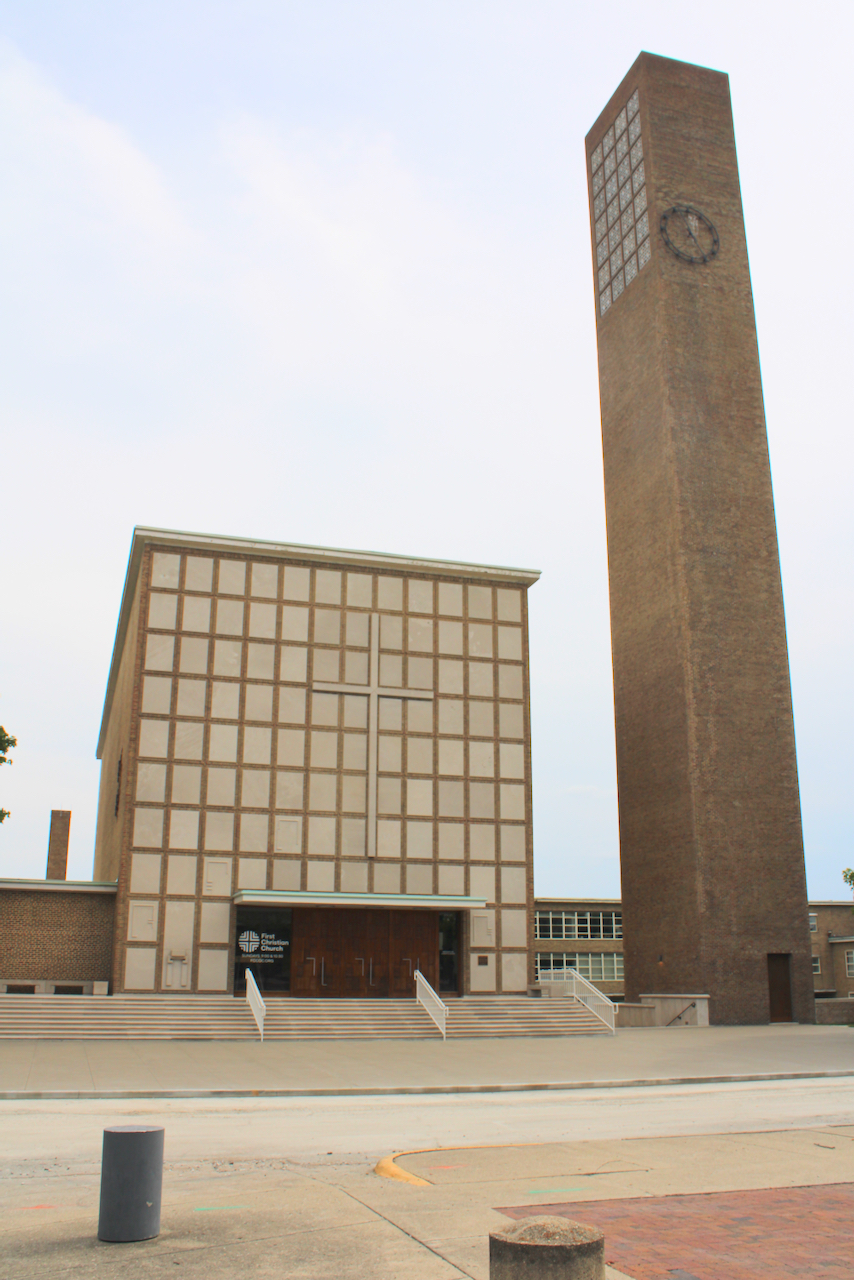
First Christian Church, Columbus, IN
Early in his time at Cummins, Miller hired Finnish-American architect Eliel Saarinen and his son Eero Saarinen to design the First Christian Church of Columbus. (Miller helped establish the National Council of Churches in 1950 and served as its first president – under his leadership, NCC was active in organizing religious support for civil rights and co-sponsored the 1963 March on Washington.) It’s a quintessential example of modernist simplicity, plain buff-colored boxes that evoke balance and harmony even as they showcase the tension between the main structure and the bell tower, which stands removed, to the side. The building was evidentially controversial even within Miller’s family – the rest of his family wanted a gothic church – and it took some convincing to the Saarinens that the community would accept such a building. But it became a national historic landmark in 2001 and anchors an extraordinary set of public buildings that make up the city.
As chairman of Cummins, Miller funded the Cummins Foundation, which made an offer to the city of Columbus: the foundation would pay architect’s fees for new public buildings in the city. Explicit in this offer was that the city government would choose from a list of prominent modern architects and give them freedom to experiment. The result: the city has buildings by I.M. Pei, Kevin Roche, Richard Meier, Harry Weese, César Pelli, Gunnar Birkerts, and Skidmore, Owings & Merrill as well as by the Saarinens. The map I’d come to the Visitors Center to purchase lists 70 architecturally significant sites to visit in the town and environs.
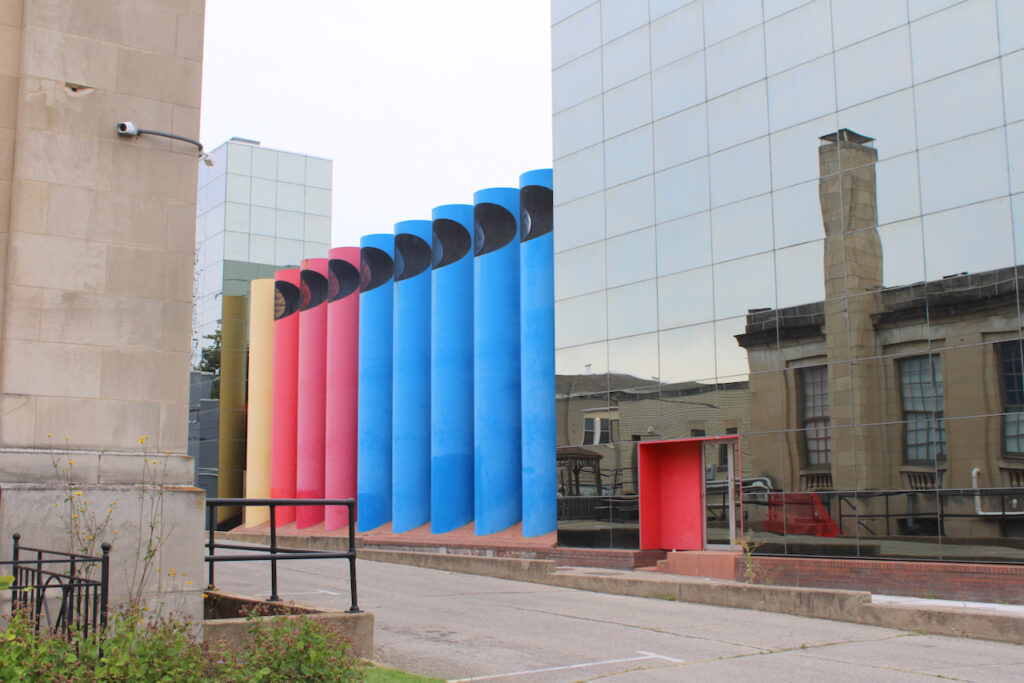
AT&T Switching Center, Columbus, Indiana. The colored pipes contain exhaust for the HVAC system.
It’s clear that Miller was an extraordinary individual, but it’s also clear that he persuaded Cummins to pursue a particularly enlightened vision of stakeholder capitalism. For Miller, Cummins’s key stakeholders were customers, employees, partners, investors, and the community – most companies nod to the community they’re located within as a stakeholder, but Miller’s offer had an organizing vision to it. Not only did he hope Columbus would be beautiful, he imagined that a city of exciting architecture could help attract talent to southern Indiana, that the schools could be some of the best in country and that workers would want to come to Columbus and stay.
Dedicating a golf course and clubhouse paid for by Cummins, Miller said: “Why should an industrial company organized for profit think it a good and right thing to take $1 million and more of that profit and give it to this community in the form of this golf course and clubhouse? Why instead isn’t Cummins—the largest taxpayer in the country—spending the same energy to try to get its taxes reduced, the cost of education cut, the cost of city government cut, less money spent on streets and utilities and schools The answer is that we should like to see this community come to be not the cheapest community in America, but the best community of its size in the country.”
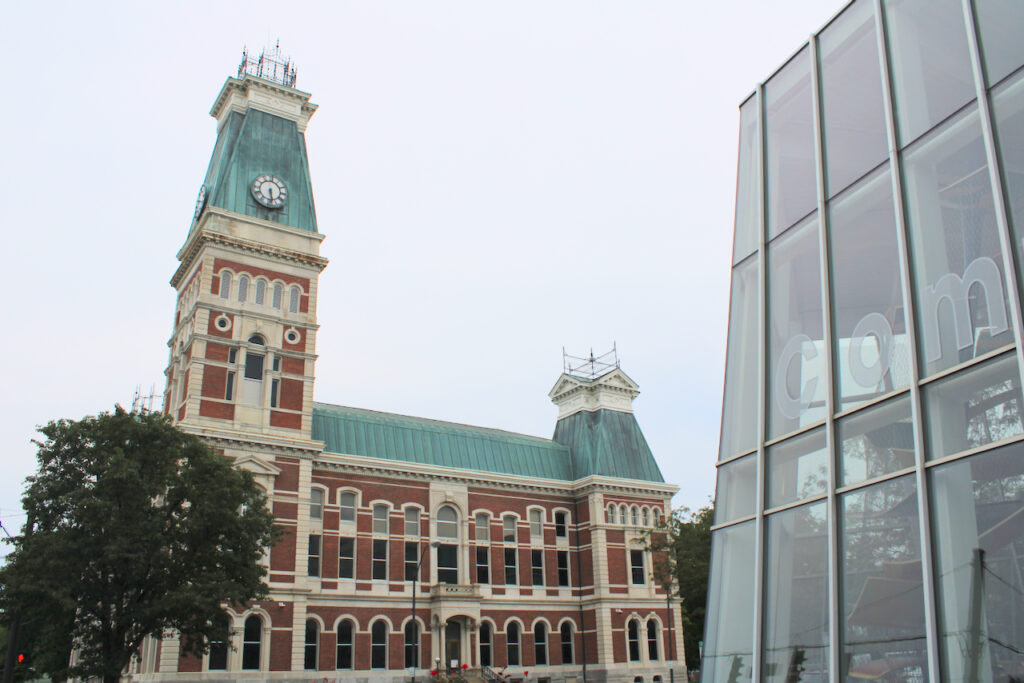
The Bartholemew County Courthouse in Columbus, IN. The Commons is in the foreground.
I had complicated feelings walking around Columbus, a town I hope to return to soon. (I had only a couple of hours in a town that really requires multiple days and an architecture tour.) It’s clear that Columbus is doing vastly better than most of its neighbors, and its property values are similarly elevated – with a 3.4x income/home price ratio, Columbus is well ahead of a comparable town like Terre Haute, and is slightly more expensive than nearby Bloomington, a well-loved university town. There are resources you simply don’t expect to see in a town of its size, like an amazing indoor playground in The Commons, a community event center owned by the town, but embodying a vision of Irwin Miller, whose building company put up money for the project as an investment in a different form of 1970s urban renewal. I saw many signs of health in the community, including pedestrian activity in the downtown, signs of a Latinx immigrant community taking root and several restaurants I was excited to try.
My first reaction was, “Why can’t everyone have this?” Yes, not every local employer is as successful as Cummins, and not every corporate board would approach community investment in the same way. But wouldn’t it be amazing if Fortune 500 companies competed to make their hometowns as marvelous in their own ways as Columbus is architecturally?
The logical next thought – for me, at least – is why should we have to rely on the graces of enlightened billionaires to have nice stuff? It’s fantastic that Miller gave generously to his community and didn’t spent its money fighting against public spending. But I’d rather live in a country that taxed its businesses adequately and used the funds to pay for strong schools, awesome playgrounds and great public buildings in every town, not just those lucky enough to have gracious capitalists.
And then there’s a third line of thinking: a project like Columbus, Indiana requires a certain obsessive streak that’s more often found in the individual, not the collective. Maybe there are particularly strange and wonderful things that require quirky individuals to have disproportionate influence at particular moments in time.
Columbus is about two hours drive from Terre Haute, another of my favorite Indiana towns. Terre Haute is the home of Indiana State University, a small and less celebrated institution than nearby Indiana University in Bloomington. Like many of the cities on my tour, its population peaked in the 1960s and has been on a steady decline since, as manufacturers have closed, moved or employed fewer people. (Terre Haute is at 58k, down from 72k at the 1960 census. By contrast, Columbus Indiana has grown from 21k in the 1960 census to over 50k today.)
One of the gems of Terre Haute is a modest but amazing art museum, the Swope, which reflects a history of private philanthropy and profound quirkiness. Sheldon Swope, a wealthy Terre Haute jeweler, founded the museum to benefit his city and “celebrate the best of American Art”, but we remember it in no small part because he made a quirky and brilliant curatorial choice. John Rogers Cox was born in Terre Haute and quickly demonstrated to his banker father that he had absolutely no head for business. Failing to make a living as a commercial artist in New York City, Cox returned to Terre Haute to become a bank teller, and then jumped at the chance to become the first director of Swope’s museum.
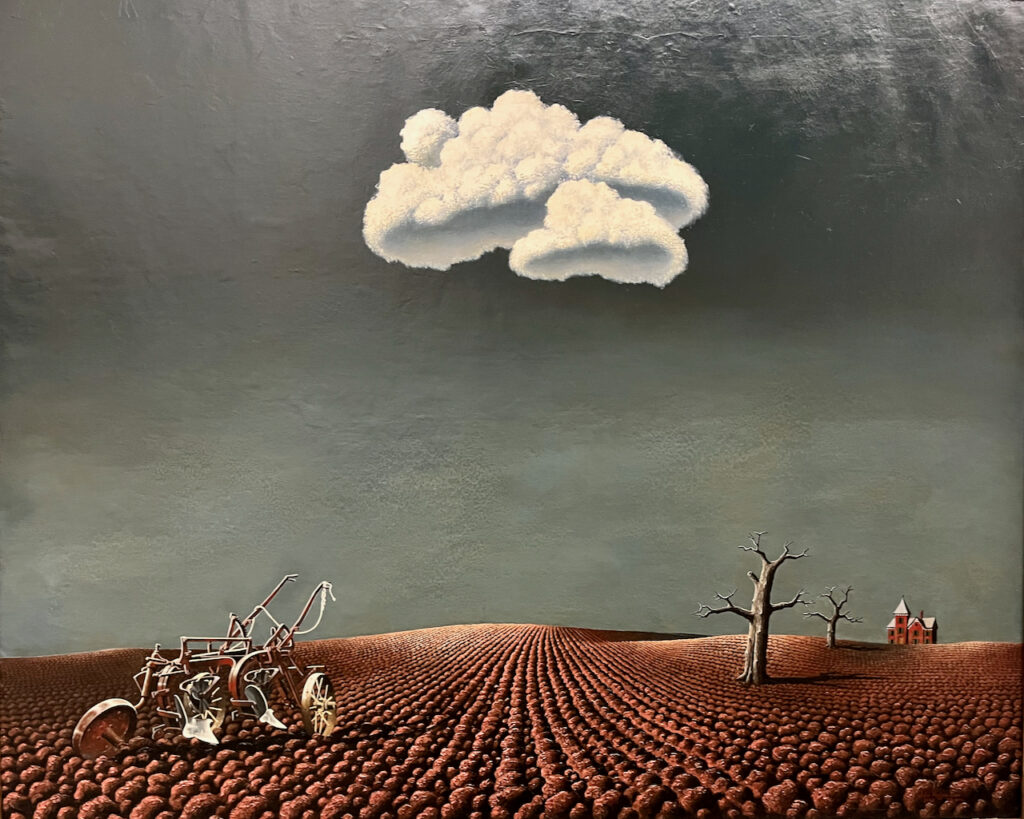
“White Cloud”, Joseph Rogers Cox, 1942
Despite his failures in the commercial art world, Cox was a gifted artist – his second painting, Grey and Gold, won a national prize for painting by living artists in 1944 and hangs in the Cleveland Museum of Art. And he knew who he liked. Rather than spending Swope’s money to acquire a European masterwork – a frequent strategy for upstart museums in smaller towns – Cox and his wife made trips to New York galleries and bought a core collection of American modernists: Edward Hopper, Grant Wood, Thomas Hart Benton, Charles Burchfield. These works hang alongside three of Cox’s canvases, phenomenally intricate works that generally took the painter over a year to complete.
I like to think that the organizing theme for the Swope’s midcentury collection is that it’s art that looks even better when you’ve spent hours driving through corn fields. Cox’s paintings, in particular, are masterpieces of magical realism. They make the most sense once the endless fields have moved from being boring and banal, through being impossibly beautiful, and into being strange, sinister and unknowable. Cox left Terre Haute not long after his stint as museum director – he taught at the Chicago Art Institute and eventually made his way to southern Louisiana, where he continued to paint Indiana landscapes from memory.
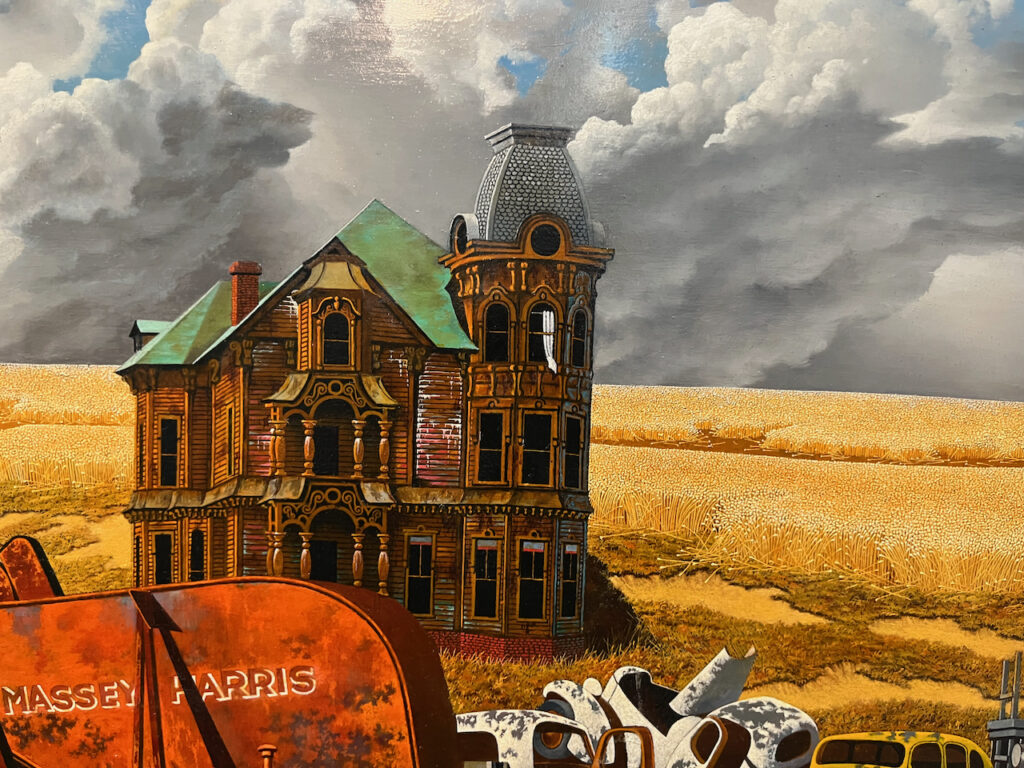
Detail from The Occupant, Joseph Rogers Cox, 1982
I visited the Swope and paid my respects to Cox last summer – this time through Terre Haute, I had another remarkable man to visit. Sixty years before Cox’s birth, Eugene Debs was born in Terre Haute to parents who’d emigrated from Alsace and opened a meat market in their new Indiana home. Debs dropped out of high school at fourteen and worked cleaning the grease from locomotive engines for fifty cents a day. When he became a celebrated labor organizer and politician, he kept his scraper in a place of pride in his office, a reminder of his days as a laborer.
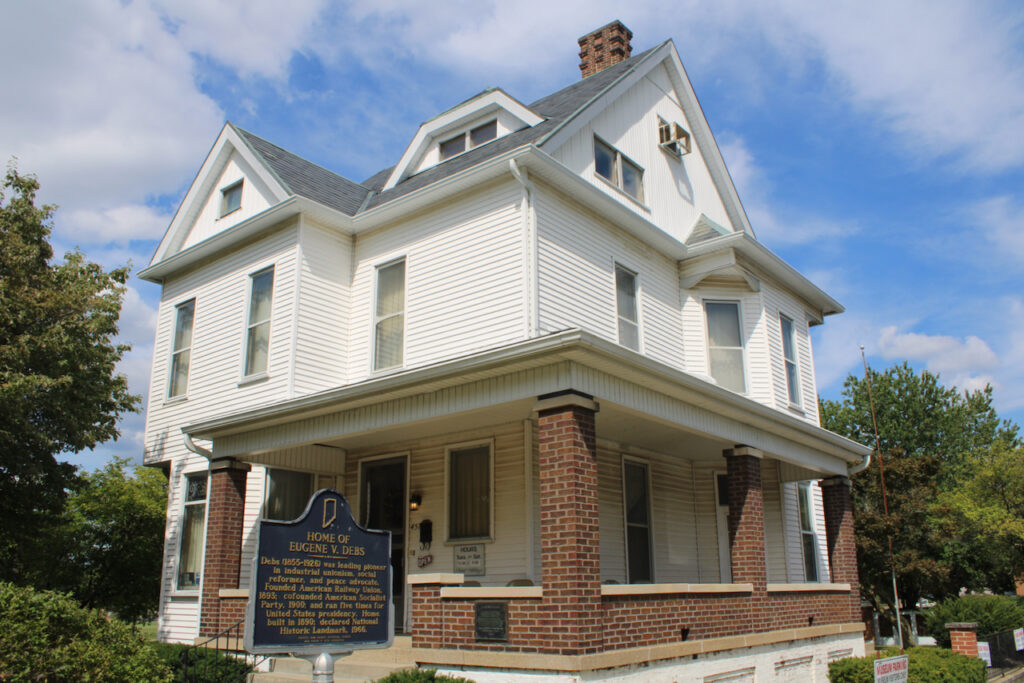
Eugene Debs house and museum, Terre Haute, IN
Debs is best remembered now as the most successful Socialist candidate for President the US has ever seen, winning 6% of the popular vote in 1912 and running from prison in 1920 as “Convict No. 9653 for President”. He was also profoundly a son of his hometown, starting his political career as town clerk of Terre Haute and representing Vigo County in the Indiana General Assembly. His long career as a labor leader, including leading the 1894 Pullman Strike – which landed him in prison for the first time, for obstructing the US mail – was carried out from within the modest confines of a clapboard and brick Queen Anne, now on the campus of Indiana State University.
The museum is organized in the best socialist fashion: it’s free to enter, but there’s a transparent box filled with donations of those who’ve come to pay tribute. There are free snacks and bottled water, a collection of high-quality masks and a folder of union apprenticeship applications. Best, there was a wonderful tourguide who was in love with socialism, Sinclair Lewis, Eugene Debs, and particularly Debs’s wife Kate Metzel, who she felt doesn’t get enough credit for Debs’s successes.
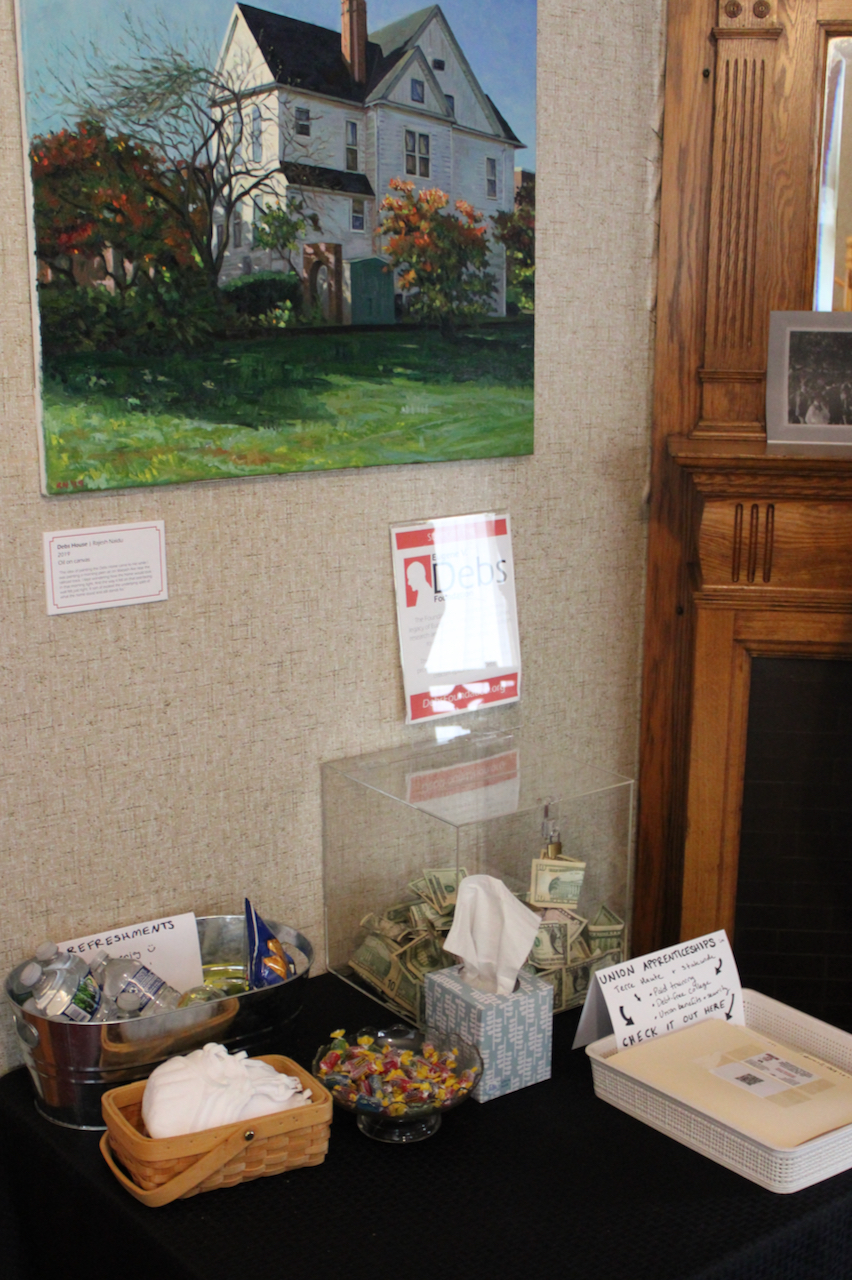
Welcoming you to the Debs museum in Terre Haute, IN
What I got from my time in Debs’s house was a strong sense that his path to socialism ran not through reading Marx, but from growing increasingly frustrated with the Democratic party’s inability to protect workers. I teach about Debs and The Appeal to Reason, a labor newspaper published in Girard, Kansas, which reached audiences of over half a million and helped give Debs national recognition, mostly as a way of demonstrating how the universe of political possibility may have shrunk, not grown, in contemporary America. It’s easy to put Debs in dialog with George Pullman, one of the most loathsome industrialists of the late 19th and early 20th centuries, whose employees often found themselves paying their wages back to the company in toto for room and board, whose company town banned public speeches, independent newspapers or any challenge to Pullman’s authority. (A popular saying of Pullman employees: “We are born in a Pullman house, fed from the Pullman shops, taught in the Pullman school, catechized in the Pullman Church, and when we die we shall go to the Pullman Hell.”)
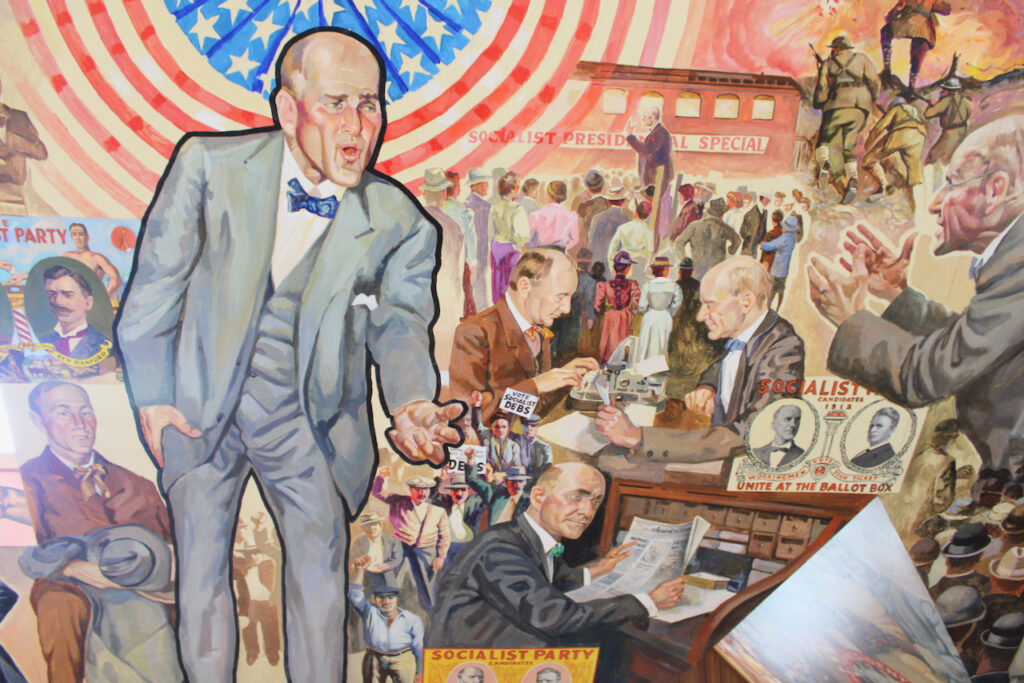
The attic of Debs’s house is covered with a mural portraying his achievements, painted by a local artist. It feels Diego Rivera-inspired… but very, very white. In truth, Debs advocated to get his union to advocate for Black Pullman workers, but did not get agreement and went on strike nevertheless. The mural accurately depicts the lack of racial solidarity that limited Debs’s movement, but it’s striking in contrast to other socialist/labor art.
What’s harder is to guess how Debs might have felt about Miller and his model for Cummins. Cummins has long had a union – the Diesel Workers’ Union – which emerged as a compromise, in which Miller sought to prevent workers from joining a national union like the UAW or IWW. And Columbus, IN is a company town, if a particularly elegant and enlightened one. If our goal is a better life for working people, is enlightened capitalism with a concern for local community a good outcome? Or one that’s too fragile and unlikely to rely on?
Forgive me if I imagine a painting, a meticulously detailed corn field, Debs in a three piece suit speaking to workers ready to march on a town designed by IM Pei. Above, the clouds are ominous, luminous, perfect.
This is likely the last roadtrip post for some time. Classes start in less than a week, and I have more processing and research to do before offering any attempts at synthesis. Here are links to the whole series for anyone inclined to follow this extended train of thought.
The trip so far: Driving by Data Set By the numbers: What statistics can and can’t tell you about undervalued cities A Square Deal in Binghamton Buried, with dignity, in Elmira Side Quest in northern Ohio In search of the “statistically improbable restaurant” Decatur – From corn to soy to crickets? Peoria to Kankakee Utica Starts with You A Tale of Two Cities
The post Road trip: The Company Town and the Corn Fields appeared first on Ethan Zuckerman.